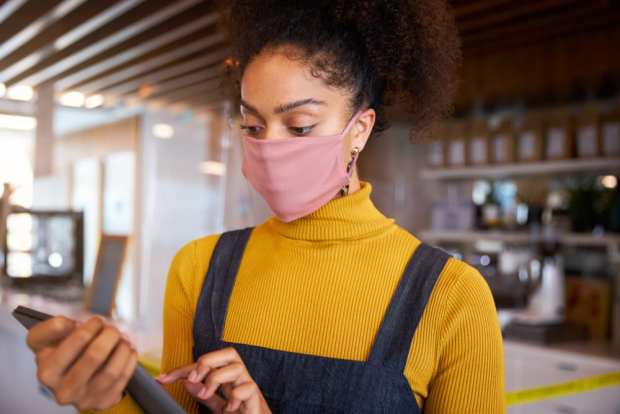Vaccine Optimism Reigns, But Retailers Must Respect Consumers’ Digital Transformation

Vaccines are here. They’re being distributed. Finally, optimism and COVID-19 can live in the same sentence. But any retailer that thinks consumers are ready to rush back into physical stores needs to check the data. Because PYMNTS data shows that the digital shift has permanent retail elements that will define 2021.
First, consider the fact that the willingness of consumers to get a vaccine is hardly universal. In a survey conducted shortly after news of the Pfizer vaccine was announced, PYMNTS research showed an 81.7 percent awareness of the news. But nearly as many of those consumers said they definitely or likely would not get a vaccine (38.4 percent) as those who definitely or very likely would (37.9 percent). The remainder said they are somewhat likely to get vaccinated. The research also showed that consumers’ interest in getting vaccinated is split along generational lines, with younger generations less interested in getting a vaccine and older generations representing the majority of consumers interested in getting vaccinated.
Perhaps most important to the retail industry, PYMNTS research shows that consumers who are likely to get vaccinated are the ones who are more commonly engaging in digital shopping experiences. These are the “digital shifters” identified within the PYMNTS series of consumer studies, including consumers who have shifted to digital methods of shopping and paying over the last nine months because they are afraid of the risks associated with visiting brick-and-mortar stores. After surviving the challenges posed by the pandemic for that time, 45 percent of consumers have shifted their retail shopping habits to digital, as have 21 percent of consumers who are shopping for groceries online and 21 percent of consumers who are buying food from restaurants via digital channels.
“The magnitude of these shifts cannot be ignored, as they mean that nearly five times as many consumers have adopted digital-first habits at restaurants, four times as many have adopted digital-first habits when shopping for retail products and nearly six times as many consumers have shifted to digital when shopping for groceries than had in March,” according to the report.
Consumers’ lack of interest in reverting to their old shopping habits is particularly strong among digital shifters who plan to get vaccinated. The research shows that 42.3 percent of consumers who have shifted to digital for retail product shopping, 46.2 percent who have shifted to digital when buying food at the grocery store and 40.4 percent of those who have shifted to ordering food for delivery or takeout from restaurants are likely to get vaccinated once a vaccine is available. The digital shifters are more likely to be tech-savvy, so they may have more access to vaccine updates and information online and thus may be more aware of the details and benefits of the vaccines, which could have increased their desire to get one.
The potential revisiting of retail becomes even more daunting when looking at the post-COVID world. A significant share of consumers say they will continue to practice caution when it comes to engaging with the outside world, even with the announcements of vaccines. Our survey data shows that 43.4 percent will leave their homes as much as they do now, whereas 52.4 percent would leave their homes either more often or much more often once a vaccine is made available to them. The main driver behind this caution may be that consumers are not sure when vaccinations will be made widely available.
And the data takes on a new perspective when viewing it through the lens of connected commerce. Connected commerce is accelerating due to COVID, as many things are, and the digital-first consumer that all financial institutions (FIs) and merchants are seeking can be found at home. Home is the center of our world at present, and anything misaligned with that “home as digital command center” ethos courts danger.
“Approximately twice as many consumers shopped for retail products from home in the summer of 2020 as they did in the summer of 2019, and three times as many grocery-shopped from home this summer over last summer, too,” according to the PYMNTS How We Will Pay report. “Twenty-three million consumers, meanwhile, used voice assistants to make purchases. This means that the share of consumers making purchases who do so via voice assistant is up 42 percent since 2018 and up 10 percent since 2019.”
